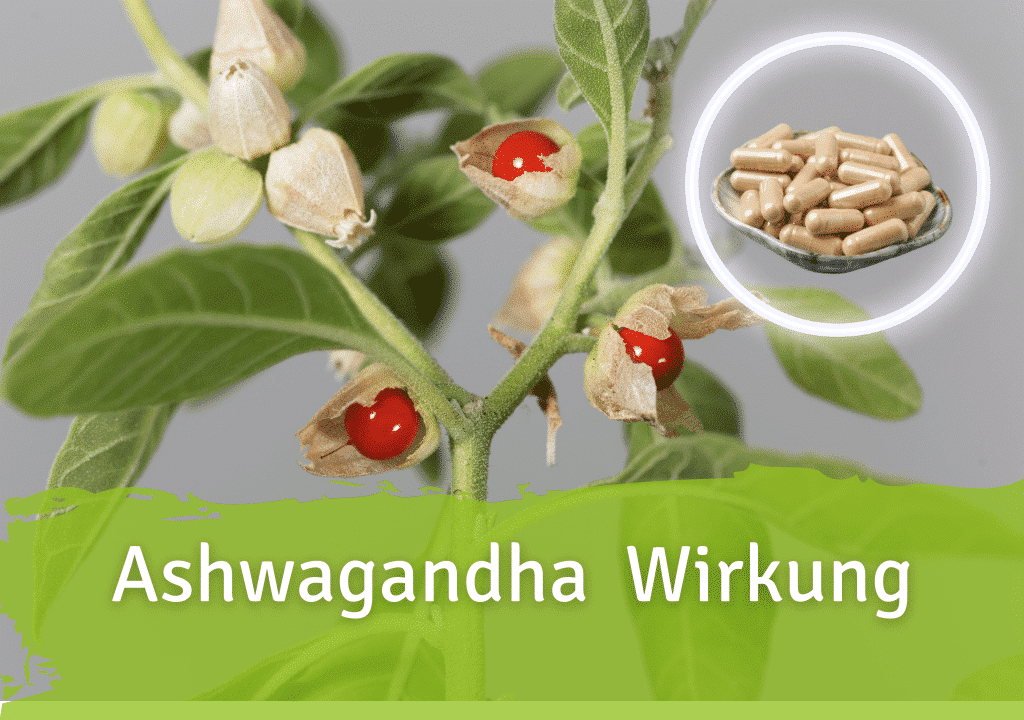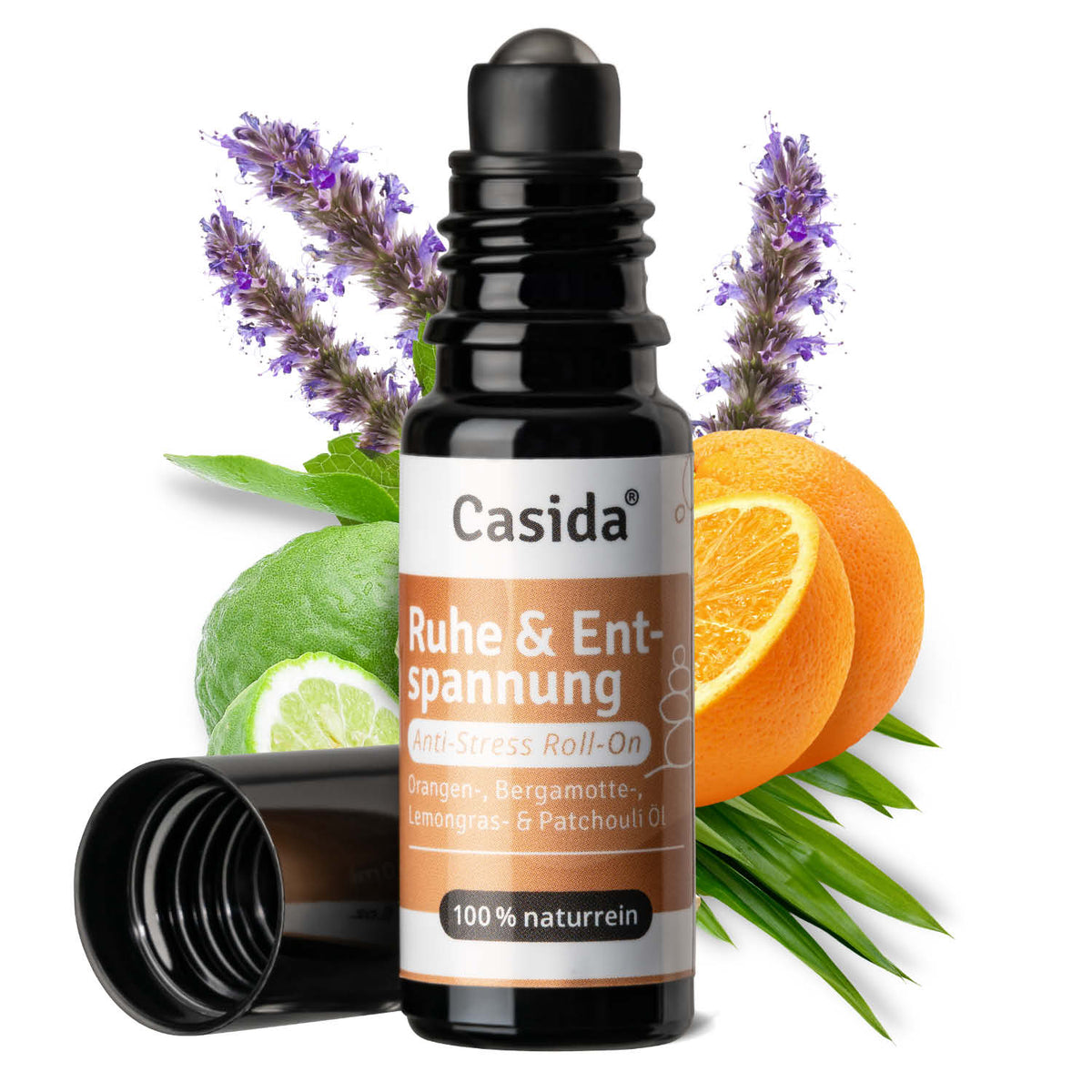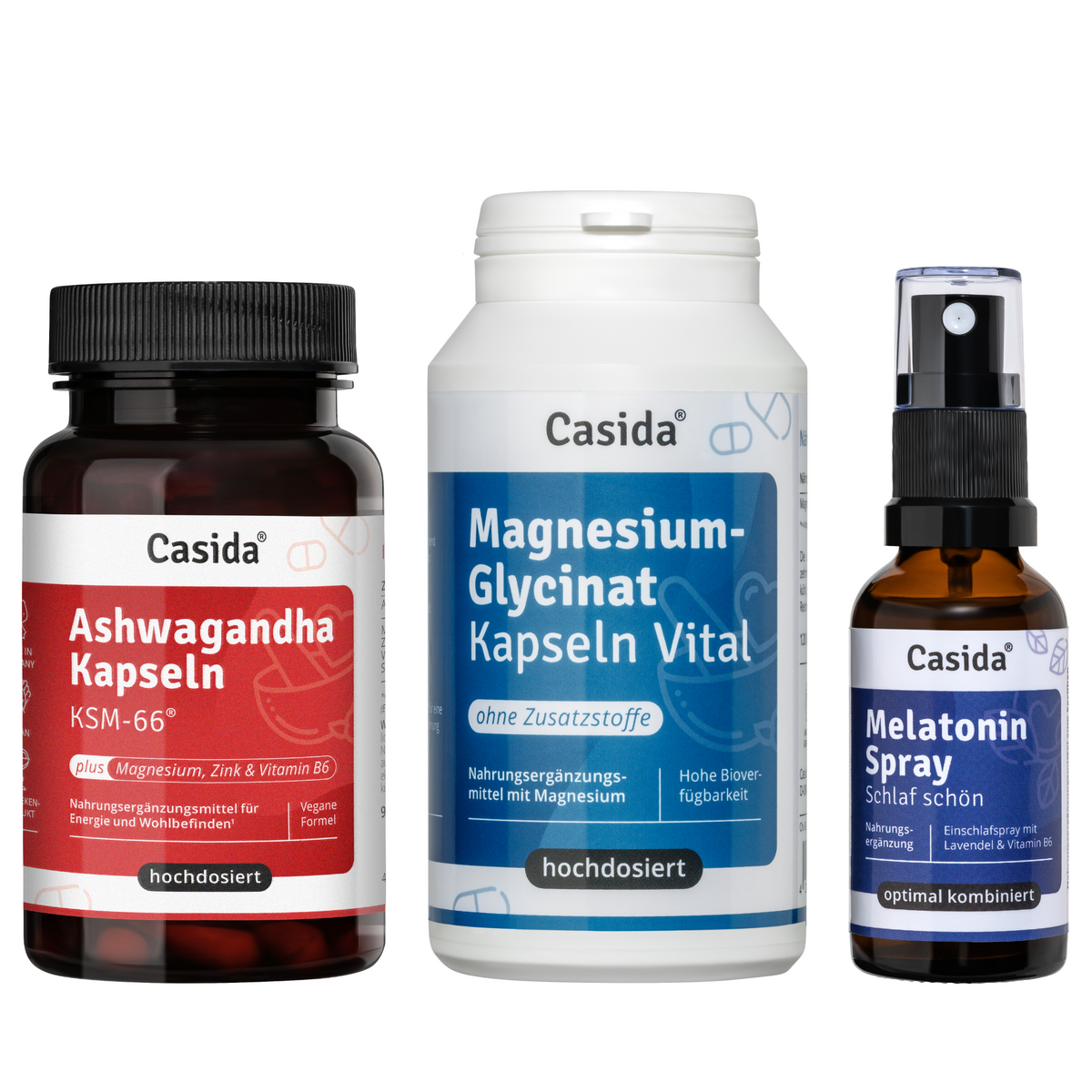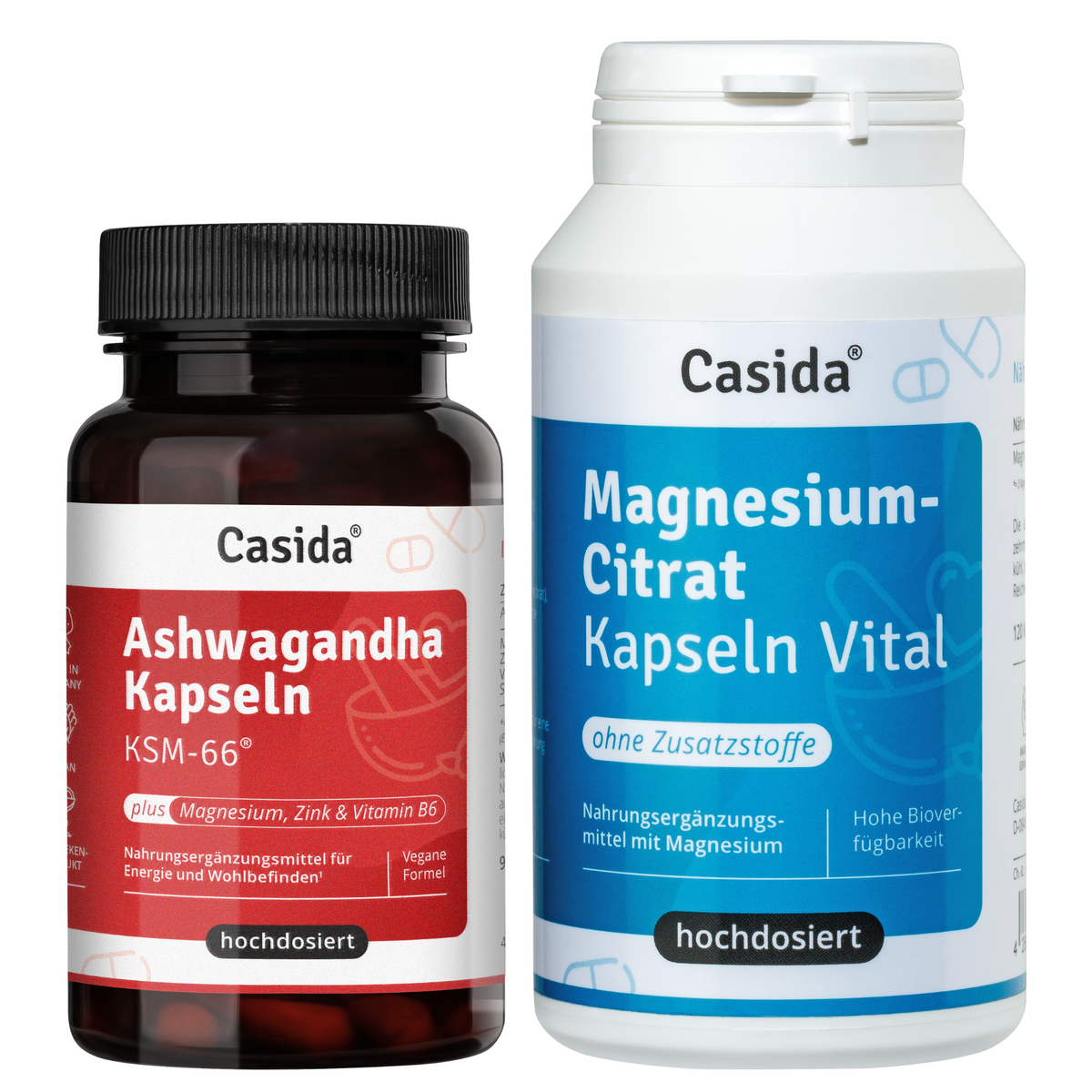What is ashwagandha? The ashwagandha plant comes from the nightshade family and is one of the most important medicinal plants in the traditional Indian art of healing "Ayurveda". The medicinal herb with the ancient Indian name is also known as the "Queen of Ayurveda". It is a plant with many names, also known as Indian ginseng, winter cherry or sleeping berry, as it is said to help you fall asleep. It is also used to cope with stress and strengthen resistance to stress. Sandy to gravelly soils are ideal for the growth of the ashwagandha plant. The herbaceous nightshade plant has olive-green, egg-shaped and elongated leaves. The shoot axes are branched and have tomentose hairs, while the four to six flowers in the inflorescences are almost sessile. The flowering period is between July and September, when bright red berries grow from the bell-shaped flowers. These look very similar to the berries of the physalis. But where does the plant come from, what is it used for and who is it suitable for? The answers to these and other questions can be found below.
Table of contents
Where does the ashwagandha plant come from?
According to experts, ashwagandha originally comes from Africa. From there, the plant is said to have spread to the Mediterranean region. "Withania somnifera" is the botanical name, with whitania meaning "scientist" and somnifera meaning "sleep-promoting". At some point, this gave rise to the term sleeping berry, whose name refers to its effect. However, the actual name Ashwagandha comes from Sanskrit and means "smell of the horse". This is probably due to the strong scent of the root. In Germany, the plant is also known as wild cherry and looks similar to physalis, which is better known in this country. The herbaceous plant can also be found in China as well as in the Near East and South Asia. The sleeping berry spread from Africa and Asia to other countries and can now be found in the Canary Islands, southern Europe and Cape Verde. The trichome-covered plant, which reaches a height of 30 to 150 cm, is now known worldwide. It has become particularly well known in India and is often used in traditional medicine. In Sri Lanka and Nepal, the sleeping berry is also regularly used for various ailments. Now it is conquering the whole world.
What are the effects of ashwagandha?
Despite its name, the fruits of the sleeping berry may not be used. Only the leaves and roots of ashwagandha contain the so-called withanolides, which have been the best researched so far. According to a paper published by the Los Angeles College of Chiropractic in 2000¹, ashwagandha is said to be a safe remedy with as few side effects as possible. The following therapeutic effects were listed in this study:
- promotes sleep
- has an antioxidant effect
- relieves anxiety
- works against dementia²
- strengthens the immune system
- inhibits inflammation
- promotes blood formation
- counteracts the development of tumors
- counteracts premature skin ageing
- has a positive effect on the cardiopulmonary system, the central nervous system and the hormone balance
Ashwagandha for sleep disorders
Sleep disorders are often associated with stress or anxiety and have unfortunately become an integral part of everyday life. In addition, anxiety, stress and insomnia can be partly responsible for the development of various illnesses. When it comes to sleep disorders, many people immediately turn to medication, although this is often not without side effects. For this reason, herbal remedies such as ashwagandha, which have almost no side effects, would be the ideal solution for insomnia. In 2019, 60 men and women suffering from stress and insomnia took part in the first placebo-controlled double-blind study³, in which a highly concentrated root extract was used to treat insomnia. The participants were given 125 mg or 300 mg of ashwagandha extract or a placebo twice a day for 8 weeks. In contrast to the group that received placebo, the remaining test subjects reported a significant improvement in sleep quality. The same effect was also observed in a study⁴ from the same year, in which the participants were able to fall asleep more quickly and generally reported more restful sleep after taking 300 mg ashwagandha root extract daily for 10 weeks.
Ashwagandha against stress
Another important ashwagandha effect is its anti-stress effect. Incidentally, ashwagandha is one of the so-called adaptogens or medicinal plants with the ability to increase stress resistance. This means that the body is less vulnerable to stress when ashwagandha is taken regularly.
Ashwagandha for anxiety
After an anxiety-relieving ashwagandha effect was proven in experiments with rats⁵ after just five days in 2000, a six-week placebo-controlled double-blind study⁶ in the same year also confirmed the calming effect in humans. There were no side effects.
Who is ashwagandha suitable for?
Side effects rarely occur when taking ashwagandha. Nevertheless, it is not recommended for use during pregnancy and breastfeeding, as there are still no studies on this. Patients suffering from high blood pressure, diabetes, thyroid dysfunction and autoimmune diseases should also consult their doctor before taking ashwagandha. All other groups of people can benefit from the positive effects of ashwagandha without hesitation.
How should ashwagandha be dosed?
Patience is required for ashwagandha to develop its full effect. It can take weeks or even months for the effects to set in. However, this is individual and for some the effect can occur after just a few days. The correct dosage depends on achieving the right amount of withanolides. It is best to ask your doctor or pharmacist which ashwagandha capsules cover your daily requirement of withanolides.
How do I take Ashwagandha capsules?
The time of day plays an important role when taking Ashwagandha capsules. If taken in the morning and evening, the stress-reducing effect of ashwagandha can be expected during the day and the sleep-promoting effect at night. It is also important to listen to your own body. If you feel tired in the morning after taking ashwagandha capsules, you should take them later instead. Those who suffer from insomnia should also take the capsules in the afternoon and before going to bed.
Sources:
¹ L C Mishra, B B Singh, S Dagenais, 08.2000: Scientific basis for the therapeutic use of Withania somnifera (ashwagandha): a review https://pubmed.ncbi.nlm.nih.gov/10956379/
² M.H. Mirjalili, E. Moyano, M. Bonfill, R.M. Cusido, J. Palazon, 05.2009: Steroidal Lactones from Withania somnifera, an Ancient Plant for Novel Medicine https://www.mdpi.com/1420-3049/14/7/2373/htm
J. Salve, S. Pate, K. Debnath, D. Langade, 12.2019: Adaptogenic and Anxiolytic Effects of Ashwagandha Root Extract in Healthy Adults: A Double-blind, Randomized, Placebo-controlled Clinical Study https://www.cureus.com/articles/25730-adaptogenic-and-anxiolytic-effects-of-ashwagandha-root-extract-in-healthy-adults-a-double-blind-randomized-placebo-controlled-clinical-study
⁴ J. Salve, S. Kanchi, K. Debnath, D. Langade, D. Ambegaokar, 09.2019: Efficacy and Safety of Ashwagandha (Withania somnifera) Root Extract in Insomnia and Anxiety https://assets.cureus.com/uploads/original_article/pdf/22928/1612429213-1612429205-20210204-18204-14l5ome.pdf
⁵ S.K. Bhattacharya, A. Bhattacharya, K. Sairam, S. Ghosal, 12.2000: Anxiolytic-antidepressant activity of Withania somnifera glycowithanolides: an experimental study https://www.sciencedirect.com/science/article/abs/pii/S0944711300800306?via%3Dihub
⁶ C. Andrade, A. Aswath, S.K. Chaturvedi, M. Srinivasa, R. Raguram, 07.2000: A double-blind, placebo-controlled evaluation of the anxiolytic efficacy of an ethanolic extract of withania somnifera https://pubmed.ncbi.nlm.nih.gov/21407960/
Important note / Disclaimer: As pharmacists, we share our pharmaceutical expertise and wealth of naturopathic experience in the Casida guide. An individual diagnosis and consultation is necessary in every case. Therefore, this offer cannot replace medical advice. It is not intended to treat, cure or prevent any disease. It is not a substitute for medication or other treatments prescribed by a doctor.








